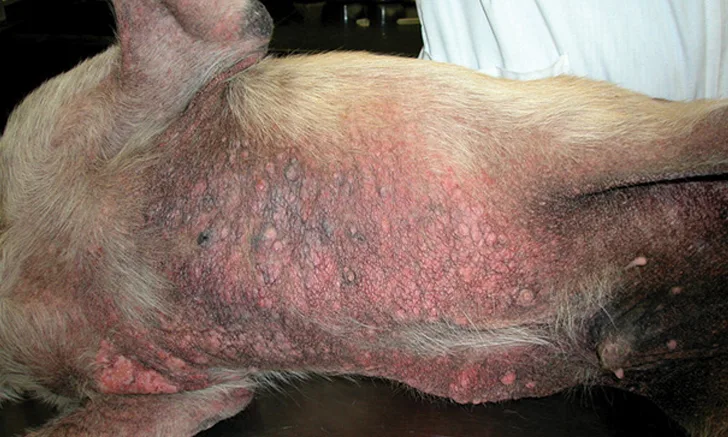My Dog Has Scabies: Should She Be Rehomed?

Anguish and disgust may often be associated with having a dog diagnosed with scabies (ie, sarcoptic mange; Sarcoptes scabiei var canis). The dog is usually severely pruritic and uncomfortable,1 and there is often concern that the mite is highly communicable among dogs and may infest humans. When faced with a scabies diagnosis, consider explaining the following to clients:
In General
A dog with scabies does not need to be rehomed.
The diagnosis is actually a good thing—it provides an explanation for the dog’s discomfort, and scabies mite infestations are curable.
To minimize environmental sources of mites, discard bedding or wash and dry it at the highest setting, and thoroughly vacuum areas frequented by the dog(s).
Communicability
Transmission can occur with exposure to foxes and coyotes.
Cats tend to be relatively resistant to Sarcoptes scabiei var canis infestation.
Humans in contact with an infested dog are only sometimes affected and, when affected, are only transient hosts for the mites unless there are repeated exposures.2
The mite may persist in the environment for 6 to 21 days, although there tends to be a lesser chance of contracting the infestation from the environment or from fomites.3
Human lesions are self limiting and usually persist for no more than a few days after successful treatment of pet(s).
Treatment4
Products approved for treating scabies include:
Topical Revolution (selamectin; zoetisus.com)
Advantage Multi (imidacloprid–moxidectin; bayerdvm.com)
Effective nonlicensed avermectins include oral and injectable ivermectin and doramectin and oral moxidectin.
These drugs should not be used in breeds with the drug toxicity-enhancing mutant ABCB1 gene, including collies, Shetland sheepdogs, Australian shepherd dogs, German shepherd dogs, Old English sheepdogs, and related crossbreeds.
Other effective nonlicensed treatments include oral milbemycin, fipronil spray, 2%-4% lime sulphur or amitraz dips, and oral fluralaner.
Because scabies is communicable, all dogs in the household—even those with no clinical signs—should be treated. Subclinical carriers are possible.
Response to therapy is usually rapid, with significant improvement noted within 1 to 2 weeks and cures established in 4 to 6 weeks.
Affected dogs should not be allowed access to places with other dogs (eg, dog parks, dog day care centers, grooming parlors) until the condition is cured.
Environmental therapy (flea therapies suffice) are only occasionally warranted (ie, if there are very large numbers of mites or mites on multiple dogs).